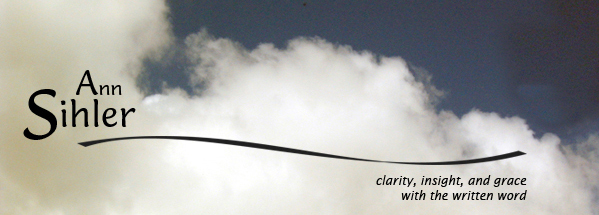|
Featured Environmental Projects
.......... What do we know about biodiversity in the greater Portland-Vancouver region? And what can we do to conserve it? The Intertwine Alliance led a collaborative effort to answers these questions by developing a written conservation strategy for the region. More than 20 partner organizations contributed material to the strategy document, but the resulting text needed additional work in order to "shine."
I edited all of the text, knitting the contributions together to create a focused, conceptual-level strategy document that explains issues and approaches for conserving biodiversity in the region. I organized and rewrote text, wrote succinct chapter summaries, and guided individual authors as needed regarding revisions. The final document has a consistent voice and point of view and is understandable to policy makers, the public, and conservation practitioners. I also edited a 250-page companion scientific document, the Biodiversity Guide for the Greater Portland-Vancouver Region.
.......... Lower Columbia River coho, Chinook, chum, and steelhead listed under the federal Endangered Species Act use watersheds on both sides of the Columbia River, in Oregon and Washington. In planning for these species' recovery, local recovery planning teams developed three geographically based plans--one each for Oregon populations, White Salmon populations, and other populations in Washington. This approach reflects the realities of our political boundaries, but the ESA requires that recovery plans take a larger, species-level perspective. A recovery plan with a broader view was needed. I collaborated with NOAA Fisheries staff to synthesize information from the three locally developed plans into a single, species-level recovery plan that covers all the populations, on both sides of the Columbia River. This was challenging because of the sheer number of populations (four different species, in more than 20 watersheds), plus the fact that the three planning teams had used different techniques for their recovery analyses. Also, although each plan presented recovery actions for its specific geographical area, none of the plans described the overall recovery strategy at the species level. I provided writing and editing services but also worked with NOAA staff on other key issues: developing an effective structure for the document, determining the appropriate level of detail, reconciling methodological differences, and characterizing the recovery strategy for each species. Throughout the project, I advised the NOAA project manager on process.
The final recovery plan was published this summer and is available at the
NOAA Fisheries website.

Content © Ann Sihler |
• • • • • • • • • • • • • • • • • • • • • • • • • • • • • • • • • • • • • • • |
Services Environmental Equity and inclusion In a jam? Work samples Quotable Creative
503.282.6311 |

